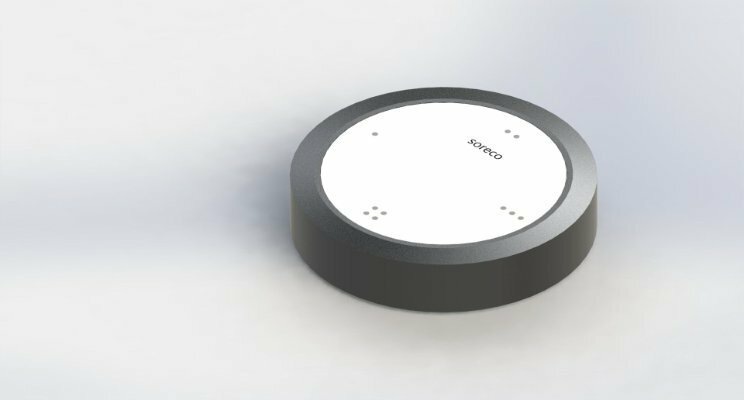
- Control sonos remotely install#
- Control sonos remotely full#
With our “technician site” connected via Consolidated DSL 60 miles south, we established a secure Layer 2 LAN extension, popped open the Roku app, and our devices appeared! Presonus Audio Mixer This time, our “client site” was about 60 miles north and connected via Breezeline Cable Modem service.
Control sonos remotely full#
This provided full remote access to all Sonos functions, allowing for flexibility for remote Sonos troubleshooting! Roku Video Streamingįor our next test, we changed up the configuration to target the Roku Video Streamer using the Roku App on iOS. Joyfully, once we plugged the technician site Edge Lite into an iPad (via a USB-C to Ethernet adapter), the Sonos system came to life and all functions became available as though we were in the same building. Plenty of Internet in the way to prevent this from working! The “technician site” was connected via an Edge Lite and Consolidated DSL service. The “client site” was deployed with an Edge Lite and Layer 2 Cloud Network on standard Comcast Cable Modem service. In our test, we used a Sonos system with a mix of original Play:5 and Play:3 Speakers and the S1 Controller App. Here is what we learned: Sonos System: Sonos Music Streaming Each of these devices connect to local networks, but have none or very limited remote management capabilities. We tested this case with a few different devices over the last couple cases: the Sonos music streaming platform, the Roku video streaming system, and Presonus’ audio mixers. Our Solution: Big Network for the A/V Integrator
Do some mix of the above, introduce complexity and fragility to the system, and end up rolling a truck anyways. Set up some type of Remote Access VPN, noting that most VPN solutions rely on Layer 3 routing, thereby breaking common Layer 2 device discovery. Often this machine will go unpatched and unmonitored for long periods of time. Control sonos remotely install#
Install a Windows desktop machine running any of TeamViewer, Go To My PC, or Remote Desktop Connection, as a dedicated host for A/V systems management. This exposes inherently insecure devices to the maliciousness of the day-to-day Internet that they aren’t designed to withstand. Set up Dynamic DNS, create Port Forwards, and set Static IPs as described above. We have heard some stories about work-arounds to the challenges: At a technical level, they require native Layer 2 network access for device discovery. They require an on-premise presence to fully install, debug, or troubleshoot. From these experiences, two particular use cases came to our attention: the popular Sonos music streaming system and Roku’s video streaming boxes.īoth of these devices have some element of Cloud capabilities (for example, streaming Spotify on Sonos requires a cloud service in the middle), but they are not 100% remotely manageable via the Cloud. The reputation of a high end A/V integrator is often equated to the speed of response to a customer stating “my Sonos needs troubleshooting” or “my Roku remote online isn’t working…” Partial Solutionsįortunately, Big Network has a few early adopters who are willing to share their experiences with us. With an eye on the environment, fuel costs, and the rising cost of staff, A/V Integrators are seeking new and novel ways to remotely diagnose and solve customer’s challenges without rolling a truck and technician to the customer site. Though we live in a highly networked society, A/V Integrators are continuously forced to roll their trucks for service calls just to obtain local network access to configure, debug, and troubleshoot devices. Ask any IT Director about his or her fear of “lateral movement” attacks due to IoT devices, and they will most certainly have a story to share. was it or )Īs we’ve blogged about in the past, a new device is exposed to the general maliciousness of the Internet at large, creating a vector for infiltration and infection into a customer site. The A/V Integrator is forced to manage and remember the complexity of the router’s port forwarding configuration and which port was forwarded (e.g. 
As such, the common approach is to: a) Setup Dynamic DNS to the home’s WAN router b) Create a Port Forward c) Assign the HVAC controller a Static IP address or set up a Static DHCP reservation. There are other devices, like certain HVAC controllers, that don’t require local network access. However, many platforms do not, nor do they offer neutered versions of their capabilities remotely. The world of cloud computing is moving into the world of these devices, so many of them offer cloud-managed remote access options. Every device in a home is being networked including audio and video streaming devices, audio and video routers, mixers, lighting controls, and even HVAC controls. The scope of an A/V Integrator’s work is expanding to include the world of networking and IT. A/V Integrators: Never port forward or set up DHCP reservations again.





 0 kommentar(er)
0 kommentar(er)
